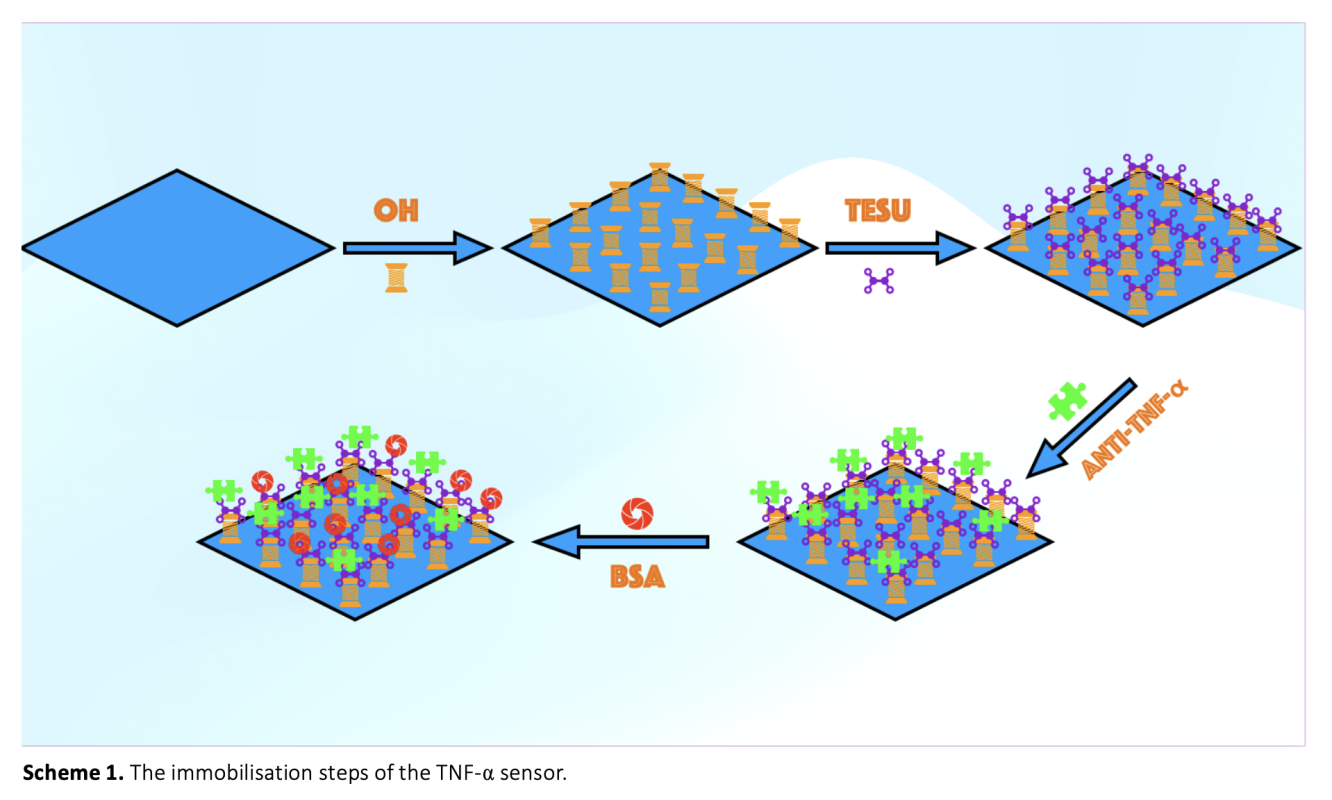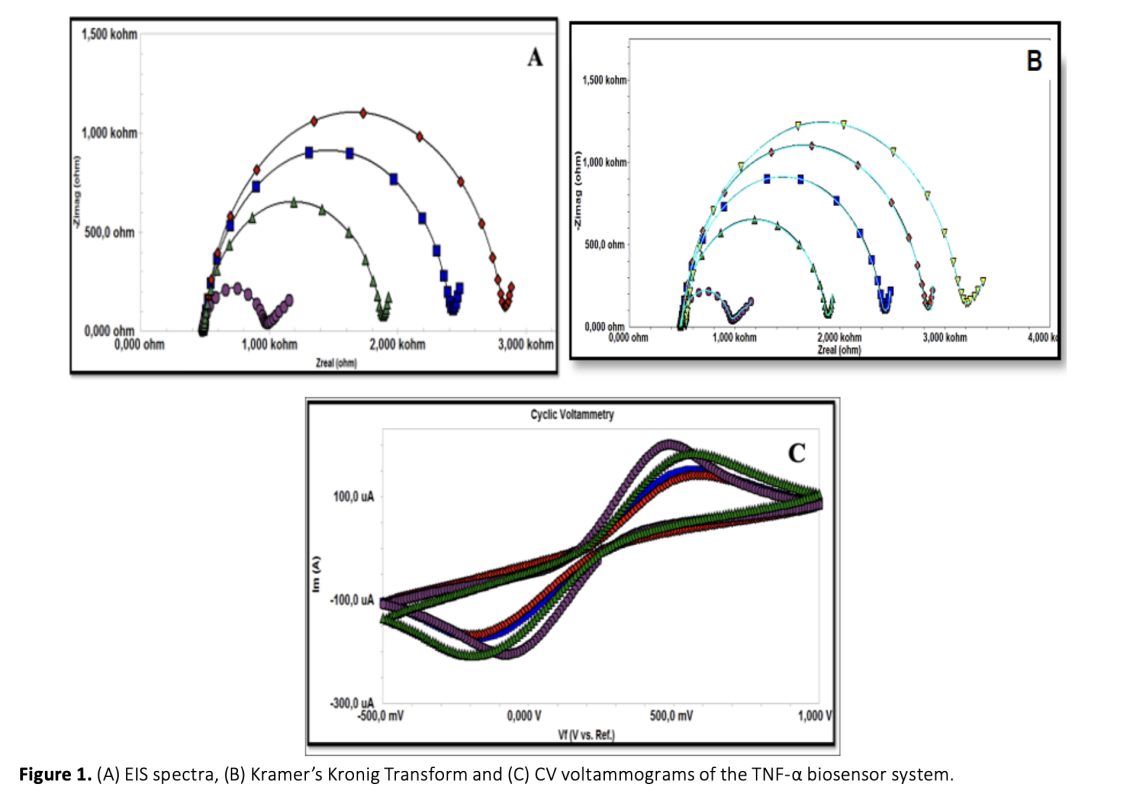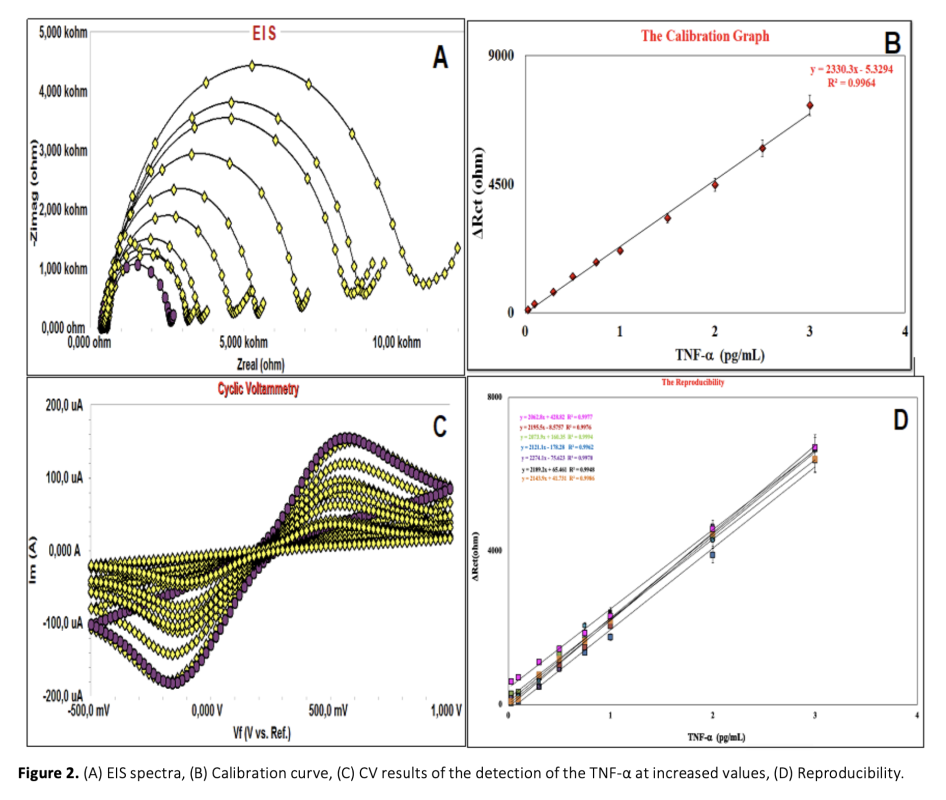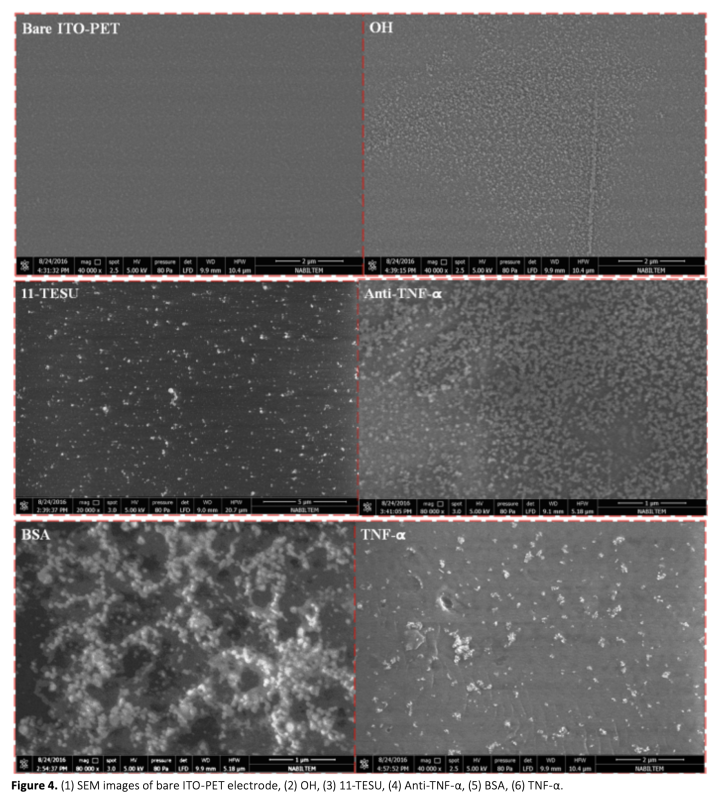In this study, a label-free electrochemical biosensor system based on a disposable indium tin oxide polyethylene terephthalate (ITO-PET) electrode modified with the 11-(triethoxysilyl) undecanal (11-TESU) agent was developed for the detection of tumour necrosis factor-alpha (TNF-α) in serum. The developed biosensor was observed with electrochemical impedance spectroscopy (EIS), cyclic voltammetry (CV) techniques, square wave voltammetry (SWV) and single frequency impedance (SFI) technique which is utilized for the specific interaction between anti-TNF-α and TNF-α antigen. In addition, scanning electron microscopy was used to look at how the morphology of each ITO-PET surface changed (SEM). All parameters such as 11-TESU concentration, anti-TNF-α concentration and anti-TNF-α incubation time, were optimized. The biosensor system was characterized by measuring its linear determination range, repeatability, reproducibility, reusability, storage stability, and surface coverage. The TNF-α electrochemical biosensor showed high levels of repeatability and reproducibility as well as a large dynamic range of detection (from 0.03 pg mL-1 to 3 pg mL-1). The LOD and LOQ for the biosensor were extremely low at 1x10-4 pg mL-1 and 5x10-4 pg mL-1, respectively. It was applied to real samples to determine whether the proposed biosensor would be useful in clinical settings.
Bu çalışmada, TNF-α’ nın insan serumunda tümör nekroz faktörünün saptanması için 11-(trietoksisilil) undekanal (11- TESU) ajanı ile modifiye edilmiş tek kullanımlık indiyum kalay oksit polietilen tereftalat (ITO-PET) elektroduna dayalı etiketsiz bir elektrokimyasal biyosensör sistemi geliştirilmiştir. Geliştirilen biyosensör, anti-TNF-α ve TNF-α arasındaki spesifik etkileşim için kullanılan elektrokimyasal empedans spektroskopisi (EIS), döngüsel voltammetri (CV) teknikleri, kare dalga voltametri (SWV) ve tek frekans empedans (SFI) tekniği ile gözlemlendi. Ek olarak, her bir ITO-PET yüzeyinin morfolojisinin nasıl değiştiğini (SEM) incelemek için taramalı elektron mikroskobu kullanıldı. 11-TESU konsantrasyonu, anti-TNF-α konsantrasyonu ve anti-TNF-α inkübasyon süresi gibi tüm parametreler optimize edildi. Biyosensör sistemi, lineer tayin aralığı, tekrarlanabilirlik, tekrar üretilebilirlik, rejenerasyon, depolama kararlılığı ve kaplanan yüzey alanı ölçülerek karakterize edildi. TNF-α elektrokimyasal biyosensör, yüksek tekrarlanabilirlik ve tekrar üretilebilirliğin yanı sıra geniş bir tayin aralığı (0,03 pg mL-1'den 3 pg mL-1'e) gösterdi. Biyosensörün LOD ve LOQ değerleri, sırasıyla 1x10-4 pg mL-1 ve 5x10-4 pg mL-1' dir. Önerilen biyosensörün klinik ortamlarda yararlı olup olmayacağını belirlemek için gerçek örneklere uygulandı.




Download Article in PDF (2.0 MB)